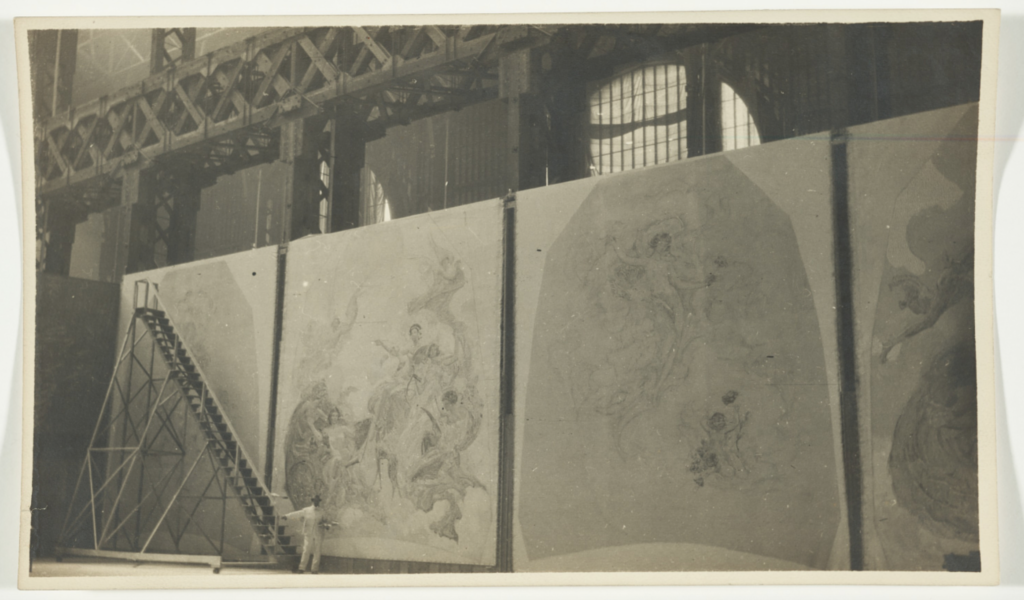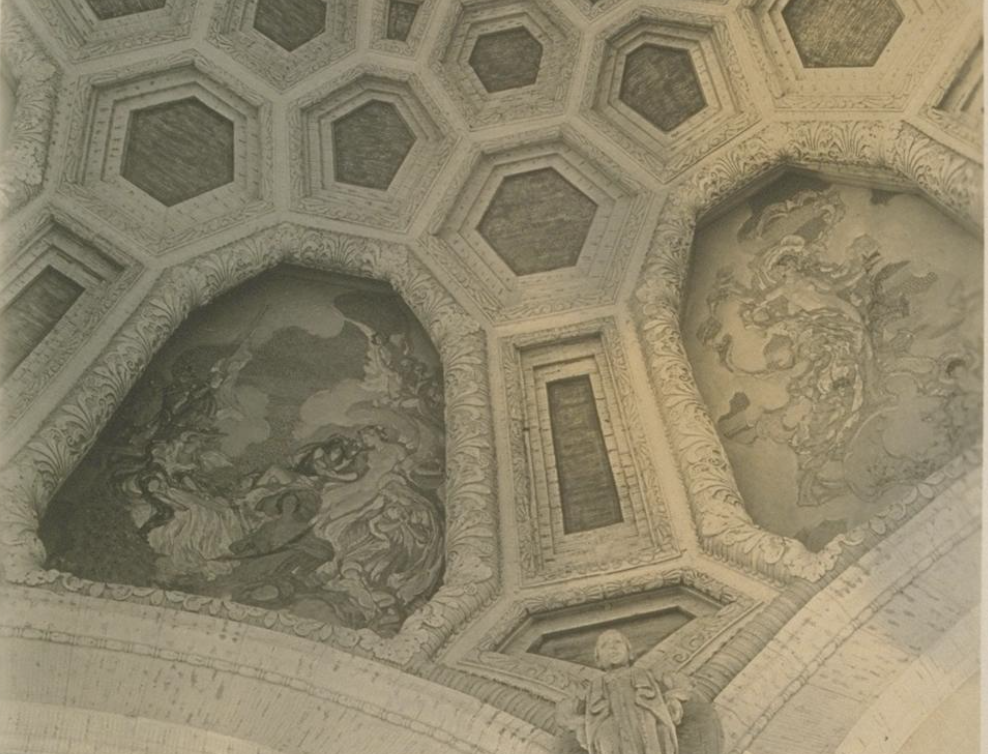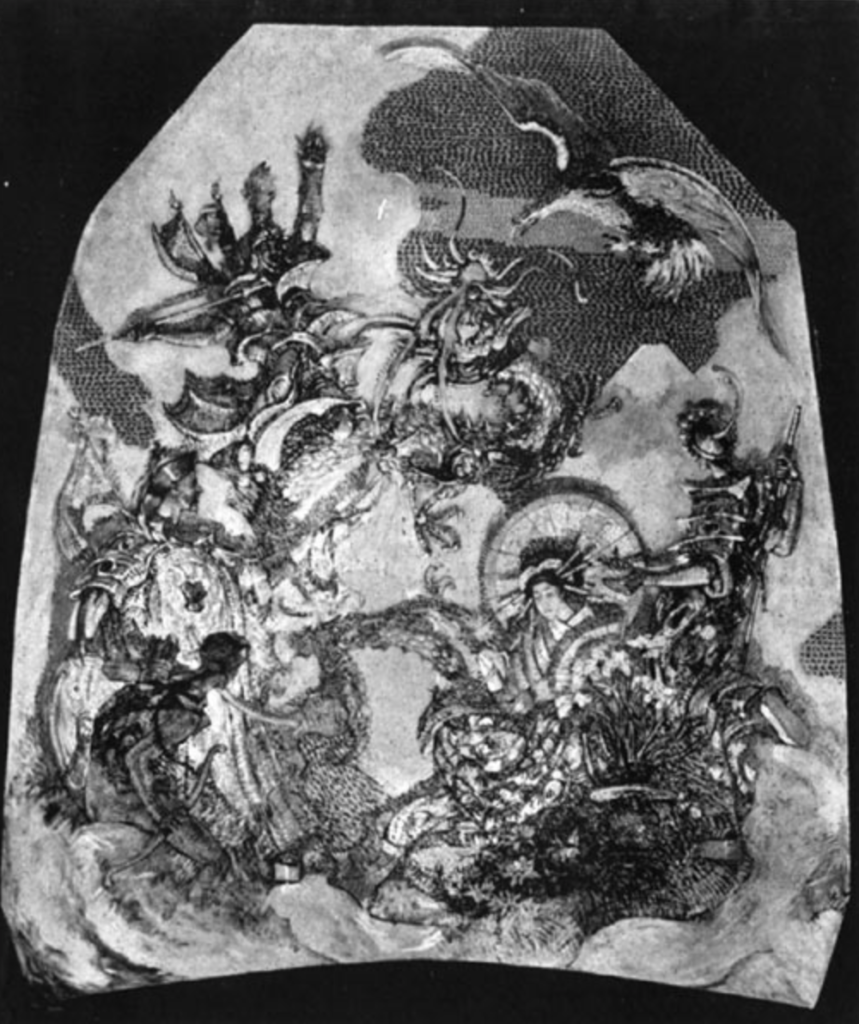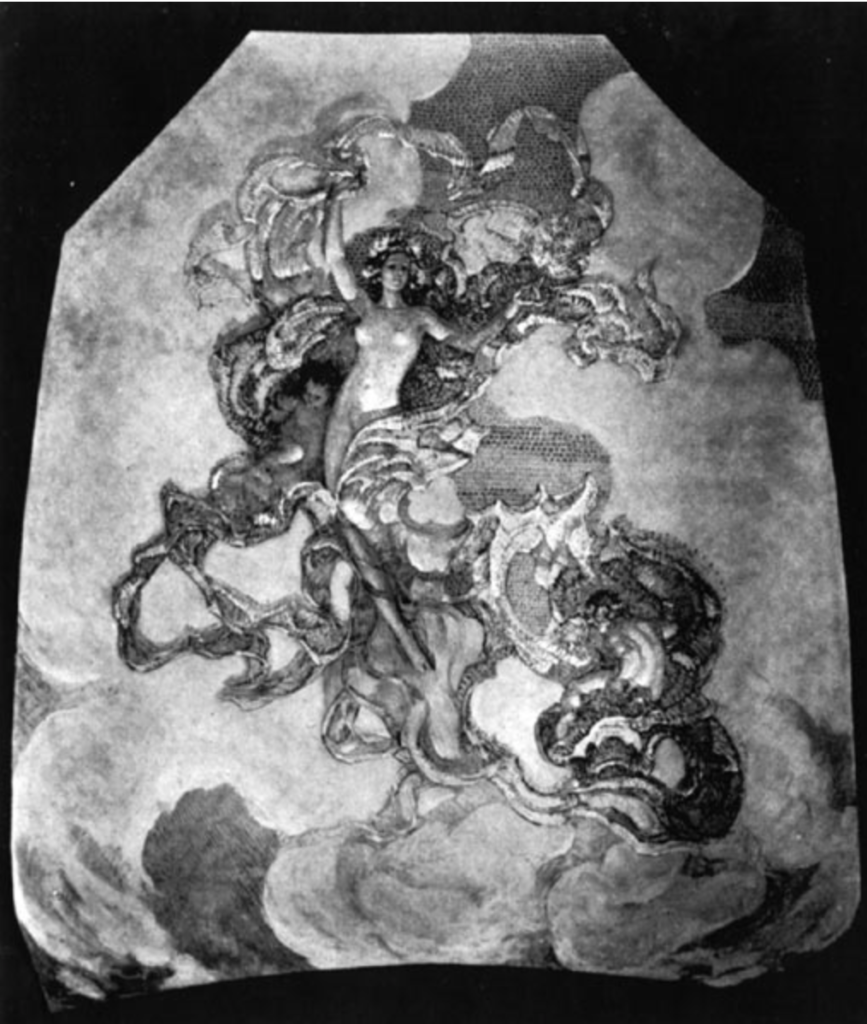Palace of Fine Arts
Location now: Unknown

Robert Reid working on the Palace of Fine Arts murals Photo: Smithsonian
In keeping with the mission of this website to catalog all art owned by the San Francisco Art Commission, we would be remiss if we did not include one of the greater pieces of art from the Golden Gate International Exposition, that has been lost.
Robert Lewis Reid’s murals for the Palace of Fine Arts building at the Panama–Pacific International Exposition in San Francisco, in 1915 was an extraordinary tribute to the Arts. Eight huge panels graced the ceiling of the rotunda: The Four Golds of California (Golden Metal, Wheat, Citrus Fruits, and Poppies); plus Ideals in Art, Inspirations of All Arts, the Birth of European Art and Birth of Oriental Art. San Francisco’s Palace of Fine Arts was re-built in the 1960s and these paintings no longer exist.

From The Jewel City Chapter 12: Above, in the dome, Robert Reid’s eight murals, splendid in color, are too far away to be seen well as pictures. Two separate series are alternated, one symbolizing the Progress of Art, the other depicting the Four Golds of California. The panel in the east, nearest the altar, is “The Birth of European Art.” The sacred fire burns on an altar, beside which stands the guardian holding out the torch of inspiration to an earthly messenger who leans from his chariot to receive it. On the right is the Orange panel, representing one of the California golds.
“Inspiration in All Art” comes next. The veil of darkness, drawn back, reveals the arts: Music, Painting, Poetry, and Sculpture. A winged figure bears the torch of inspiration. The second of the California golds, the Wheat panel, follows, and then “The Birth of Oriental Art.” The allegory here is the ancient Ming legend of the forces of earth trying to wrest inspiration from the powers of air. A Chinese warrior mounted on a dragon struggles with an eagle.
Gold, the yellow metal, is the subject of the next panel, followed by “Ideals in Art.” In this appear concrete symbols of the chief motives of art, the classic nude of the Greeks, the Madonna and Child of Religion, Joan of Arc for Heroism, Youth and Material Beauty represented by a young woman, and Absolute Nature by the peacock. A mystic figure in the background holds the cruse wherewith to feed the sacred flame. A winged figure bears laurels for the living, while the shadowy one in the center holds the palm for the dead. Last of all comes the Poppy panel, representing the fourth gold of California.
“The entire scheme – the conception and birth of Art, its commitment to the earth, its progress and acceptance by the human intellect, – is expressed in the four major panels. They are lighted from below by a brilliant flood of golden light, the sunshine of California, and reach up into the intense blue of the California skies.” This, as well as much of the interpretation of the eight pictures, is drawn from Reid’s own account.

Title: Oriental Art –
Photo from The Sculpture and Mural Decorations of the Exposition – A. Stirling Calder. Website: Books About California

Titled: The Golden Wheat – Photo from The Sculpture and Mural Decorations of the Exposition – A. Stirling Calder. Website: Books About California